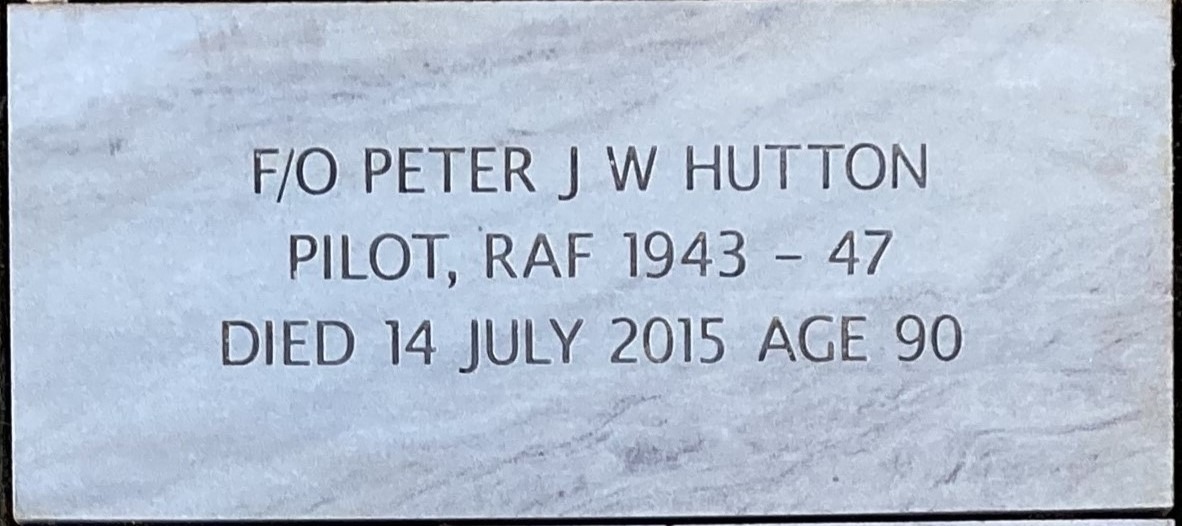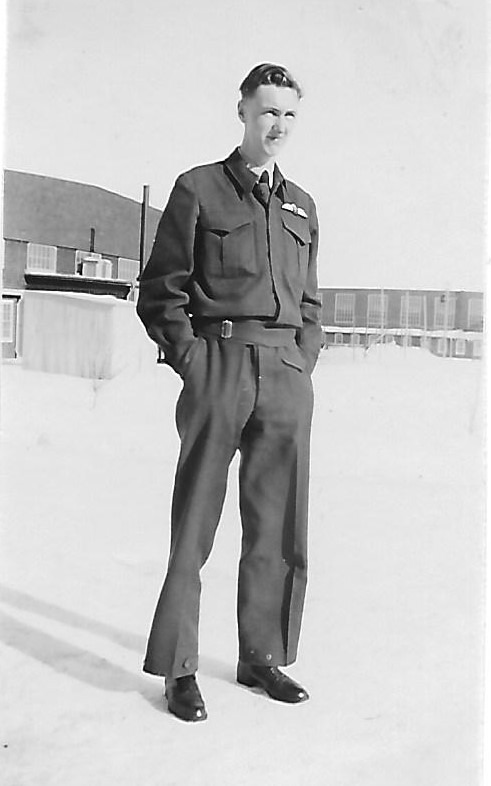
F/O PETER JW HUTTON
PILOT, RAF 1943-47
DIED 14 JUL 2015, AGE 90
Peter James William Hutton was 18 in January 1943 at the height of Bomber Command’s assault on Germany and mainland Europe. He had received his “Selected for Aircrew” letter in the preceding December but had to wait until he was 18 and three months before he could be “called up”.
So determined was he to serve that when he found out inadvertently that the temporary job he had taken on the Liverpool docks was a reserved occupation he was worried he had stymied his chance to serve. Fortunately, an exemption was made for aircrew.
His formal RAF service began on 19th April 1943. While at Initial Training Wing in Babbacombe, Devon he was caught up in a German “Nuisance Raid” which saw many civilian casualties including 21 children killed when the church they were in for Sunday School was bombed. Having been caught up in the raid he was then involved in the rescue and clear-up operation. Ironically, given his chosen occupation, it was to be the closest he would come to enemy action.
His experience in training was to be one of repeated delay. He was transferred to Canada in November 43 but did not move to a training base, EFTS#32 in Bowden, Alberta until January of ’44. His solo was on 11th March 1944.
Further delay followed. With fewer losses being suffered on operations course duration for new aircrew was lengthened and when in May ’44 he was transferred to SFTS#11 in Yorkton, Saskatchewan he found to his frustration it was a training centre being wound down for closure. Training proper, then, did not resume until he moved to SFTS#10 in Dauphin, Manitoba at the end of July ’44. Eventually, he was awarded his Wings on 2nd March 1945 and commissioned to Pilot Officer.

Of course, by then the war was coming to a close. For VE Day he was in Summerside, Prince Edward Island undertaking additional navigator training and was back in the UK in Harrogate for VJ Day.
Thereafter, he was posted to 160 Squadron in what was then Ceylon. The squadron was being readied for a transfer back to the UK which entailed disposing of munitions and armaments. While there he gained some experience flying Consolidated Liberators ladened with such cargo which was dumped into the Indian Ocean.
When 160Sqn moved to the UK he was transferred to a non-flying role in Singapore and thereafter (by which time he had been promoted to Flying Officer) to command a base (albeit without aircraft) at Kota Bharu in the North East of Malaya, infamous for being the landing site for the Japanese invasion in 1941.
In mid-1947 he was transferred to the UK and demobilised (service no. 167865) on 15th May 1947.
Thereafter, he remained in the Volunteer Reserve, notching up the required number of hours flying each year until released in the early 1950s. By then he was working for a shipping company, the Clan Line, in Liverpool. In his spare time he was a decent amateur cricketer (medium, fast bowler).
He was married in August 1957 to Jean who he had met at ballroom dancing classes and who also worked at the Clan Line. Soon after, he joined a shipping agency and they moved to Surbiton, Surrey where in 1961 they had their first child, a son. A move to Thundersley in Essex, which was to remain the family home for the rest of their lives, and a second child, also a son, came in 1963. They had a third son in 1970.
Peter lived a clean, honest life; his eagerness to serve and RAF days unsung. Upon his death in July 2015 at the age of 90 the most used description of him by friends and relatives was “a gentleman”.
The stone at the International Bomber Command Centre has been laid with love, gratitude and admiration from his sons, daughters-in-law and grandchildren.